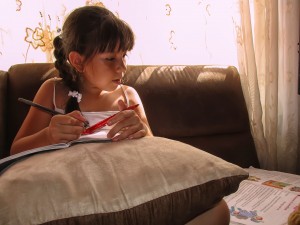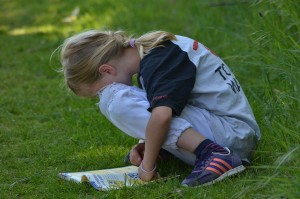Ready, Set, GO BACK TO SCHOOL!!!! Learning is a Process: Part 3 of 6
What exactly does it mean to learn something? How can we know that we have adequately learned it? Are there better or more effective ways in which to learn? These are just a few questions surrounding the art of learning—and what better time to ponder these thoughts than at the start of a brand new year of learning? Now, of course, just as every child is unique, each child’s learning style is equally unique. It’s time that we learn a little more about the process of learning.
Learning is a process—but what does this mean? Obviously, children do not simply learn by hearing something. Unfortunately, the human brain is not a recording device or database. Instead, truly learning something involves several—sometimes many—deliberate interactions with the concept.
Let’s use baking as an example. Before learning to bake a cake, the amateur chef will need to be introduced to the concept of cake. The chef may take a bite, look at a photo, or watch a how-to video about cake baking. This introduction prepares the chef for what is to come and ideally demonstrates the end goal or product—a cake.
After tasting a cake sample, the chef will seek to know more about the cake before baking his own. For instance, he may research different flavor combinations, baking methods, or icing techniques. By seeking further information, the chef begins to better understand cake and how it is made.
Next, the chef will attempt the task of baking a cake. Taking all of the knowledge that he’s compiled, the chef will now actually get his hands dirty and try baking a cake on his own.
After baking, the chef will obtain feedback from taste testers. Ideally, these taste testers should be expert chefs who have experience baking cakes or at least some novice chef peers who know how a good cake is supposed to taste.
Taking the feedback into consideration, the amateur chef will now look back at the recipe and baking techniques and make adjustments based on his reflections.
The chef can decide to circle back to any previous steps to perfect his cake. Perhaps he needs to taste other types of pastry, take an extra baking class, alter the ingredients or measurements, or read another cookbook. Either way, the chef continues to work towards his goal of creating a delicious cake. And, since a cake can never be too delicious, the chef’s learning is never finished.
Just as the amateur chef’s journey to the perfect cake is a process, children’s acquisition of knowledge and new skills proceeds in a similar fashion. Learning does not occur in one fell swoop; it is not instantaneous; it is not a uniform recipe or sure-fire set of instructions. Learning takes time, intrinsic motivation, creativity, and patience. When children struggle to learn something, frustration arises. It is important to let your child know that learning is a process that involves trial and error—failure is a necessary step in this process. No matter the setbacks, we must teach children to overcome and persevere.
Because, just as the amateur chef knows all too well, triumph after failure is even sweeter!
Looking to empower your child to succeed? Learning Essentials’ Brain Camp teaches students practical step-by-step ways to study, organize, manage time, prepare for tests, and use executive functioning strategies— essential skills for today’s academic environment. Click here to learn more or enroll: https://learningessentialsedu.com/workshops/













